It All Starts with Play!

2025 − 2035
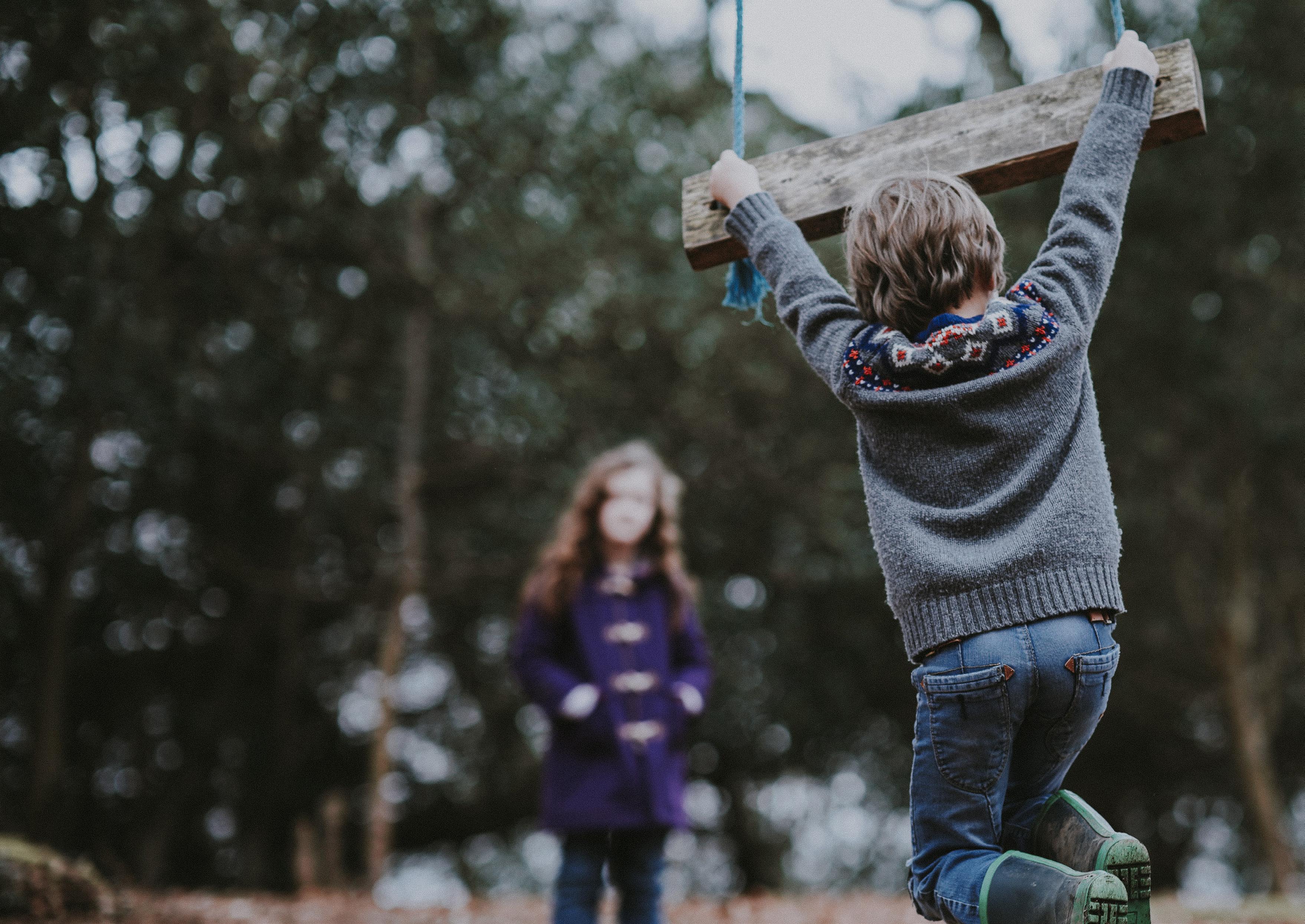


2025 − 2035

Play is essential to childhood — and to society.
It is how children learn, grow, connect and thrive. Yet for too long, play has been neglected in policy, practice and public life. Children’s freedom to play has been steadily eroded — by fear, traffic, time poverty, risk aversion and shrinking space. The result is rising inequality, worsening mental health, and a generation of children growing up disconnected from their communities and from their own freedom.
This strategy is a call to action — a practical and ambitious roadmap to restore a play-based childhood for all children by 2035.
We are Play England — the national voice for play. We aim to re-norm play across society — in hearts, minds, streets, schools, systems and policy.
We are grounded in the United Nations Convention on the Rights of the Child (UNCRC) , particularly Article 31 and General Comment 17. Our work is rooted in that right.
A society where all children have the freedom to play.
To make play a normal, accepted and visible part of everyday life again.
To restore a play-based childhood for all children in England by 2035.
We are guided by Lott’s STAR framework — Space, Time, Acceptance and Rights — a practical model for implementing children’s right to play in policy and practice.
Our approach is underpinned by a set of values and principles rooted in children first, relational working, servant leadership, collaboration, hope and stewardship — shaping not just what we do, but how we do it.
• Spaces:
Creating play-friendly environments wherever children are — at home, at school, on the street, in parks, their communities and digital spaces.
• Skills:
Recognising and supporting people who enable play opportunities — with playworkers at its core and a wider ecosystem of play enablers.
• Systems:
Building a resilient play sector — rebuilding the infrastructure for play through national policy, legislation, research and funding.
• Society: Re-norming play as an essential, accepted part of childhood — shifting culture from risk-aversion and control to trust, freedom and joy.
This is a living strategy — not a static document. We will deliver it through:
• A three-year cycle of Reflect, Reinvigorate and Renew: Ensuring the strategy remains dynamic, adaptive and grounded in lived experience.
• Children’s Assemblies: Structured, child-led forums to embed children’s voices in strategy renewal, national policy and local action.
We will act as the strategic backbone of the play sector — convening partners, shaping policy, and enabling a connected, confident and collaborative sector.
We will know we are succeeding when:
• All children have equitable access to safe, inclusive, and enriching opportunities to play.
• Local and national systems recognise and protect children’s right to play.
• Play is seen not as a luxury — but essential for healthy childhoods and thriving communities.
But above all, success will be defined by children themselves : When children can freely, safely, and joyfully play in their homes, streets, schools and communities.
This strategy is a blueprint for change — but also an invitation .
To policymakers, planners, parents, practitioners, and partners: Join us in re-imagining what childhood could be — and in imagineering it into reality.
Because if we want healthier, happier children, stronger communities, and a fairer, more creative society . . .
It all starts with play.
Once upon a time, children had the freedom to play.
We were some of the lucky ones. Growing up in the 1980s and 90s, we had a play-based childhood. We have vivid, joyful memories of playing with friends and family — freely outside our front door, in the street where we lived, in our local park, at school, on our computer, in the adventure playground, and out in the wider community.
It wasn’t perfect, but it was ours. Play was an everyday part of life — visible, accepted, and embedded in our homes, neighbourhoods and culture.
We belong to the generation that witnessed the transition from analogue to digital — the last generation to grow up offline before the internet, smartphones and social media reshaped the way children live, learn and connect. While technology has transformed childhood in many ways, the decline in play began long before the first smartphone.
The freedom to play started to decline in the 1980s and accelerated through the 1990s, shaped by growing traffic, urbanisation, risk aversion and changing societal norms.
Today, we watch our children grow up in a very different world — one dominated by schedules, screens and supervision. A phone-based childhood, not a play-based one. Where we once played out on our street without needing permission, our children now can’t — not because they don’t want to, but because it’s no longer ‘normal’, welcome, or perceived as safe.
According to the British Children’s Play Survey, today’s children are, on average, two years older than their parents were when they’re first allowed to play out alone. That’s two more years of missed freedom, mischief and joy.
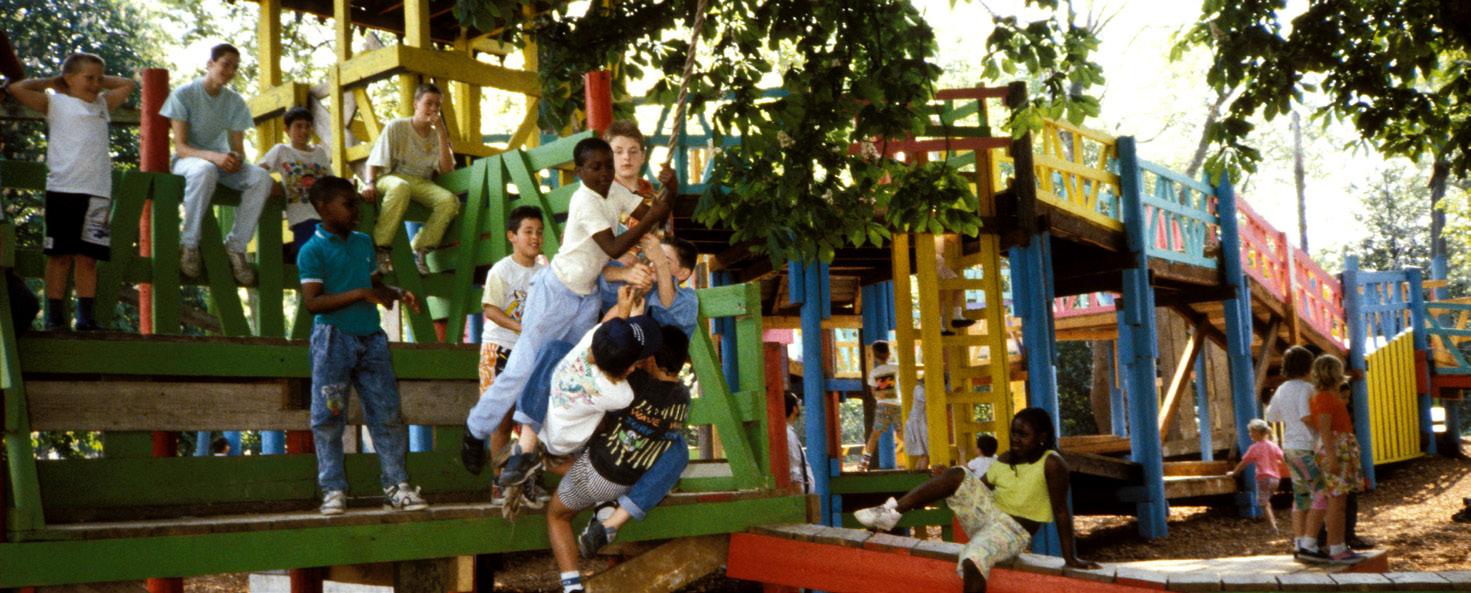
Across England, children’s freedom to play has been squeezed out of society . Adventure playgrounds closed. Playworkers forgotten. Playgrounds left to rot. Neglected politically. And children are paying the price.
We can and must do better — for our children, and for future generations.
We are seeing the consequences play out in real time: mental health worsening.
Physical activity declining. Social isolation rising. Inequality deepening. And in our most deprived communities — where play is needed most — it’s often least available.
It doesn’t have to be this way. Children haven’t changed — they still need what they’ve always needed: time, space, opportunity and freedom to play.
We don’t need to fix children. We need to fix the system.
This is a strategy for doing exactly that — a strategy for re-norming play, for societal acceptance. It is not a wish list. It is a bold, practical plan to ensure play is recognised, accepted and protected again — in policy, in planning, in design, in streets, schools and public space.
England once had a National Play Strategy , backed by serious investment and vision. That strategy was scrapped in 2010. Since then, we’ve seen a vacuum in national leadership on play — and a collapse in infrastructure and imagination.

But momentum is building. In January 2025, Parliament held its first debate on play in eight years — and the longest debate on play in 17 years . The sector is energised. The evidence is clear. Public awareness is growing. The political moment is shifting.
This strategy is not just an invitation to imagine change — but to imagineer 1 it, to enable it, support it, bring it back to life, and secure it for the future. Because if we want happier, healthier children, stronger communities, and a fairer society . . .
It all starts with play.
Eugene Minogue Executive Director
Anita Grant Chair of Trustees

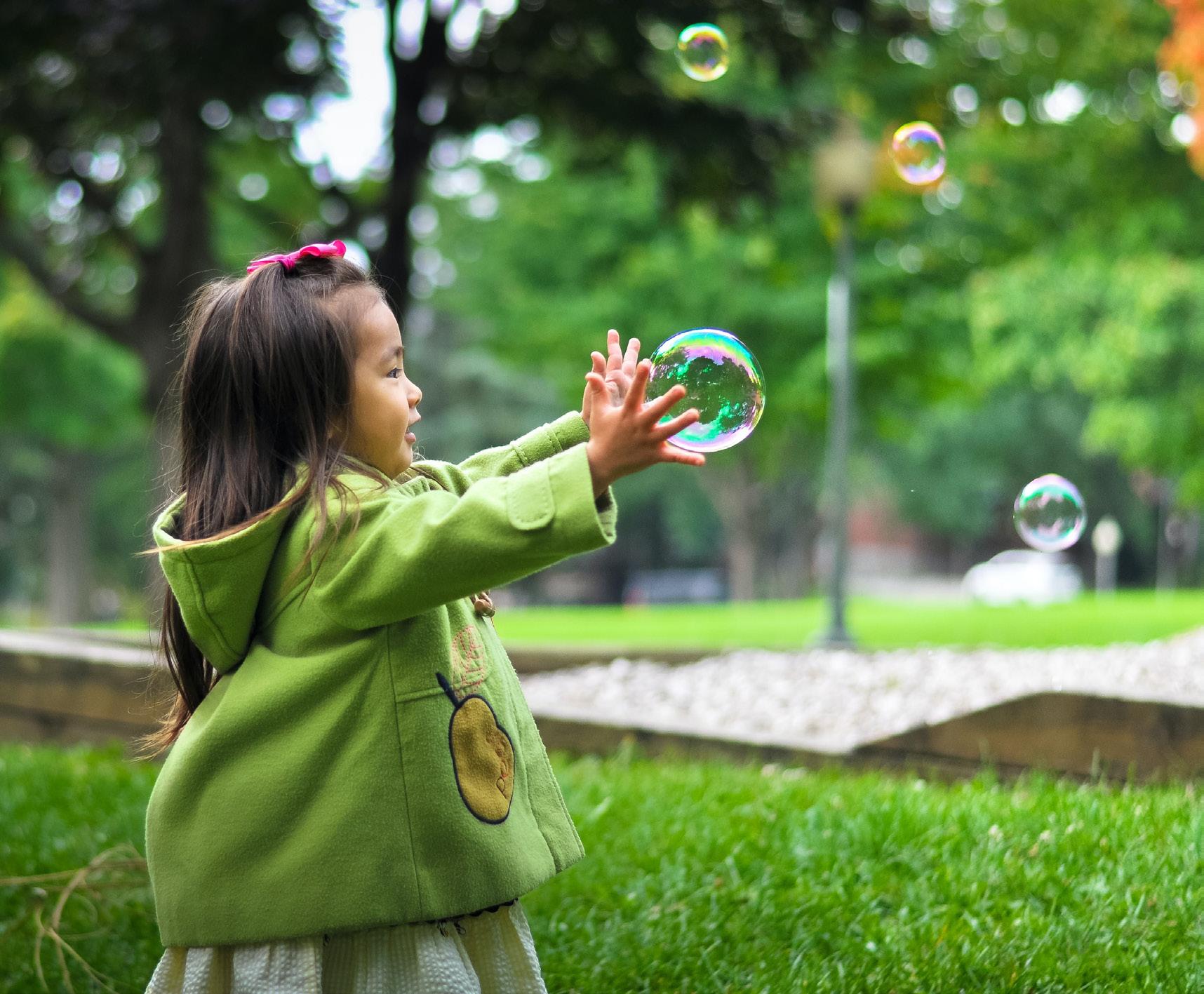

In a bold and symbolic gesture, Andy Burnham and Ed Balls swung into action at an adventure playground in South London to mark the launch of England’s first and only National Play Strategy
Developed in partnership with Play England and backed by £235 million, the strategy was a landmark moment in recognising play as a vital part of childhood and public policy.
It set out a 12-year vision to create 3,500 new play spaces across every local authority, including 30 staffed adventure playgrounds, and to embed play in planning, services, and spaces across the country.
Unfortunately, in 2010 the strategy was abandoned by government.
This strategy calls for a renewed commitment to that original ambition.
Play is the fundamental way that children explore, imagine, connect with, and make sense of the world. It is how they express themselves, build relationships, develop resilience, and experience joy. Yet, despite its central role in healthy development and wellbeing 2, play is still often misunderstood, undervalued, or seen as frivolous — rather than essential to childhood. Play has been defined 3 as:
In other words, play is:
• Freely chosen: Not directed or imposed by adults.
• Self-directed and selfstructured: Shaped by children’s instincts, ideas, and imagination.
• Intrinsically motivated: Done for its own sake, not as a task or performance.
• Essential: To children’s wellbeing, learning, and development.
While play includes many forms — digital, physical, social and creative — this strategy is primarily focused on protecting and enabling children’s freedom to engage in real-world, physical play in the spaces and communities they inhabit.
Play must be recognised, accepted and protected in its own right; it is fundamentally different from sport.
Yet play is the foundation upon which sport is built. Without play, children wouldn’t develop the resilience, physical literacy and social skills needed to engage effectively in sport and physical activity.
It all starts with play!
…behaviour initiated, controlled and structured by children, non-compulsory, driven by intrinsic motivation, not a means to an end, and that provides opportunities for exploration, creativity, selfexpression, and emotional regulation.”
Play may be quiet or loud, physical or digital, solitary or social. It may involve fantasy, movement, repetition, risk, conflict, humour, boredom or deep focus. What unites all forms of play is that it belongs to the child. Today, this includes digital and phygital play — which, while evolving, must complement rather than replace opportunities for free, physical, realworld play.
Sport is typically structured and competitive, with rules and goals set by adults. In contrast, play is spontaneous, self-directed and driven by the child’s own interests and imagination. It’s about exploration, creativity and social connection — all on the child’s terms. Play enables children to develop critical skills — from resilience and problem-solving to physical literacy — in a natural and unburdened environment.
Play is not a luxury. It is a right — recognised in international law. Under Article 31 of the United Nations Convention on the Rights of the Child (UNCRC) 4:
Every child has the right to: Relax, play and take part in a wide range of cultural and artistic activities.
In 2013, General Comment No. 173 was issued to guide governments on how to implement this right. It establishes clear expectations for states that have ratified the Convention, outlining what governments must do to uphold and implement children’s right to play. These include:
• Recognising play as essential for children’s wellbeing and development.
• Ensuring adequate time, space, and support for play in daily life.
• Embedding play in planning, education, health, welfare, and the public realm.
• Taking legislative, administrative, and budgetary action to protect the right to play for all children.
The government ratified 5 the UNCRC more than three decades ago, meaning the right to play is not aspirational — it is a legal obligation under international law. However, implementation has not been equal across the UK – both Wales (2011) 6 and Scotland (2024) 7 have enshrined the UNCRC into domestic law.
Today, England remains the only British nation without legislation to enshrine the UNCRC - including the right to play – into domestic law.

Children’s freedom to play has been steadily declined. This decline is not new — It’s generational, and it’s accelerating. Childhood has been changing since the early 2010s. Today’s children are at risk of becoming the first generation to have a phone-based childhood rather than a play-based one.
The societal norm of children playing freely in their communities has faded — replaced by traffic, ‘No Ball Games’ signs, and a growing sense that children do not belong in public spaces. Professionals often treat play as a disruption to be managed.
% who agreed that as a child they…
Children’s play has become structured, supervised, and contained — often shifting indoors or onto screens 8 .
While digital and phygital 9 play can offer real play value, they can’t — and shouldn’t — replace the social connection, freedom, movement and risk that spontaneous, outdoor play provides.
The British Children’s Play Survey (2021) 10 found that children are around age 11 when they are allowed out to play unsupervised, whereas their parents’ generation were allowed out at around age 9. That means two more years of being supervised — and only being able to play away from home when parents are available — necessarily reducing children’s opportunities to play.
Children’s Daily Time Use (1975 - 2015)
Screen-based Activities
Homework
Sport
Screen-based and supervised activities have increased since 1975 while unsupervised activities have decreased.
Socialising Out of the Home
Outdoor Play
Children want more time, space, opportunity and freedom to play!
In 2021, the Children’s Commissioner for England asked over half a million children 11 what mattered most. One of the most frequently used words in The Big Ask was “play.”
Places for kids to play and have fun things to do.”
- Child
Our Trends in Children’s Street Play report (2023) 12 found that streets — once the most democratic and accessible spaces for children’s play — are now among the least welcoming. Children described their communities as unsafe, uninviting, or simply off-limits. Parents fear judgment for letting their children play out in their neighbourhood.
The streets don’t feel like they’re for us anymore” - Child
Research by the University of Sheffield, Unequal Geographies of Play: Mapping Access to Playgrounds in England (2024) 13, confirms that some of the most deprived communities in England have the poorest access to playgrounds. Urban areas with high child poverty often have fewer playgrounds per child than more affluent or rural areas. This means that a child’s opportunity to play freely and safely can depend entirely on where they live — further compounding existing inequalities, and underlining the need for play opportunities in schools, particularly for those unable to access safe spaces outside the school day.
The Percentage of Children (Under 16) within 500m of Playgrounds by Level of Deprivation and Settlement Category (with standard deviation bars)
The infrastructure for play is collapsing - Adventure playgrounds closed. Playworkers forgotten. Playgrounds left to rot. Neglected politically.
The 2008 National Play Strategy 14 , developed by government with Play England, was bold, comprehensive, and forward-thinking. Backed by £235 million, it aimed to create 3,500 new play spaces across every local authority—including 30 staffed adventure playgrounds.
More than just playgrounds, it set out to embed play into planning, housing, schools, transport and public space.
Unfortunately, in 2010 the strategy was abandoned by government. The result? A steady erosion of play provision and play policy across England began.
Today, England remains the only British nation without a national play strategy or play sufficiency legislation – falling behind Wales (2012) 15 and Scotland (2023) 16 where legal play sufficiency duties have successfully improved planning, provision and policy.
The decline of play has been normalised — but it is not inevitable. It is the result of choices.
Restoring a play-based childhood is not about nostalgia. It is about restoring the conditions and opportunities children need to thrive.
It’s time to give children their childhood back.
And it all starts with play!
When children are denied time, space, opportunity and freedom to play, the consequences ripple through every aspect of their lives — across the systems that surround them, and across wider society.
Play deprivation is not just about missing out on fun. It means missing out on:
• Connection: The friendships, learning and connections to people and place that are gained through play.
• Expression: The emotional outlets that support regulation and selfawareness.
• Independence: The exploration that helps children build autonomy and problem-solving skills.
• Movement: The physical activity that keeps bodies healthy and builds foundational motor skills.
• Risk: The challenges that help children build confidence, judgement and resilience.
When children are denied play, they are denied a vital developmental opportunity — one that underpins physical and mental health, emotional wellbeing, and cognitive growth.
As highlighted in our Children’s Mental Health and Play (2023) 17 briefing, by Professor Helen Dodd, play supports children’s ability to process stress, regulate emotions, and feel a sense of safety and agency. Without it, children are more vulnerable to poor mental health, including anxiety and depression.
Play deprivation has been linked to:
• Increased childhood inactivity and obesity.
• Rising mental health issues, including anxiety, loneliness and depression.
• Higher stress and behavioural difficulties, particularly among younger children.
• Delays in social development, language and emotional literacy.
• Lower confidence and reduced independence, particularly in girls and disabled children.
The effects are not equally felt. Children in low-income families, those with Special Educational Needs and Disabilities (SEND) and those who face discrimination for other reasons are the most likely to experience barriers to play. This has knock-on effects on health and social inequalities.
Play deprivation is both a social justice issue and a public health one.
At a systems level, play deprivation places extra strain on schools, health, and social care services. When play is overlooked, other services must pick up the pieces — dealing with issues that could have been prevented through something as simple, natural and powerful as play. Failing to prioritise play is not just bad for children — it is economically shortsighted. The cost of inaction shows up in rising CAMHS 18 referrals, declining school attendance and behavioural challenges in classrooms.
When play is squeezed out of public life, communities lose more than playgrounds — they lose connection. Play is how children build relationships across difference, how neighbours meet, and how trust is grown. Its absence deepens social isolation — not just for children, but for families and communities.

A society where all children have the freedom to play.
This is the society we want to rebuild — a society where play is no longer the exception, but the accepted norm. A society where all children have the freedom to engage with their surroundings, their peers, and themselves in ways that are both creative and meaningful.
To make play a normal, accepted, and visible part of everyday life again.
To shift society to a culture where play is recognised, accepted, and protected — at home, at school, in our streets, in our neighbourhoods and communities. A society where play is seen as essential, and is embraced by families, communities, professionals and policymakers alike.
To restore a play-based childhood for all children by 2035.
To restore a play-based childhood for all children by 2035.
Societal Change
The right to play is universal and non-negotiable, as established by Article 31 of the UNCRC and General Comment 17. To realise this right, children’s needs must be met across four essential areas: Space, Time, Acceptance and Rights — the STAR framework.
Together, these conditions form the foundation of a society where play is visible, valued, accepted and protected.
Lott’s STAR framework 19 was created by Dr Naomi Lott, Lecturer in Law at the University of Reading. It offers a practical, rights-based model for creating a society where play is no longer a privilege, but a universal reality for every child.
Physical and mental freedom to play, imagine, explore, and belong.
Protected, unstructured time for spontaneous, self-directed play. A culture that recognises and celebrates play as a right. Legal, policy, and planning systems that secure and uphold children’s rights.
Children need both physical and mental space to play — safe, accessible environments and the freedom to explore, create and imagine without constant adult control. Play must be visible and integrated into public life, neighbourhoods and design.
Children must have unstructured, unscheduled time to play — every day. This means shifting culture in schools, homes and services to value play as essential, not optional.
Children’s play must be welcomed in public life. That means shifting societal attitudes — so play is recognised, celebrated and supported in all its messy, noisy and creative forms.
Children’s rights must be embedded meaningfully in law, policy, and practice — with their voices and needs shaping decisions, and their right to play protected through strong legal and planning frameworks.
Each of our four interconnected priorities is aligned with the STAR principles: embedding Space , protecting Time , building Acceptance , and securing Rights . Together, they create the conditions for play sufficiency in every community — and a society where every child has the freedom to play.

Together, these values and principles will shape not only how we lead internally, but how we work across systems and society. They will underpin how we listen, learn, lead and steward a living, evolving ecosystem for children’s right to play.
Children First
We start, listen, learn and lead with children’s rights, experiences and aspirations. Children are not an afterthought in decision-making — they are the starting point, with policy and practice informed by children’s voices.
We lead by enabling others — putting the needs of children, communities and partners before selfinterest. We measure our success by the success of those we support.
We act with optimism about what can be — and with humility, recognising where we are. We stay curious, reflective and open to challenge and new ideas.
We prioritise people, trust, culture and shared stewardship alongside structures and outputs. We value people and relationships as key infrastructure within a play-friendly society.
We build collaborations, not silos. True system change happens when we act collectively, not competitively.
We see ideas, spaces and movements as living commons to be cared for and nurtured — not as commodities to be controlled.

Play happens wherever children are — at home, in schools, on streets, in parks, online, in quiet corners and in their imaginations. But too often, the physical space and time to play is unavailable, unwelcoming or undervalued. Whether through overscheduling, fear, poor design or restrictive policy, children’s opportunities to play have been squeezed out.
Creating play-friendly environments means recognising the value of both formal and informal play spaces — from adventure playgrounds and playgrounds, to streets, parks, estates and other everyday places
where play happens. It’s not just about building new spaces but embedding play into the fabric of daily life. That means restoring space, reclaiming time, shifting societal attitudes, and recognising children’s right to play — in homes, schools, neighbourhoods and digital environments.
To uphold that right, we must embrace the principle of play sufficiency — ensuring all children have enough time, space, opportunity and freedom to play in the places they live, learn and move through each day. This means treating play as essential infrastructure — as vital as education, housing or health — and ensuring children have the freedom to use those spaces on their own terms.
Restoring, protecting and reimaging spaces for play — physical, digital and indoor— especially where they have been most eroded.
• Restoring and protecting adventure playgrounds and playgrounds , leveraging new National Planning Policy Framework protections to secure their place in local plans and drive stronger national standards — in quality, quantity and longterm sustainability.
• Embedding the principle of play sufficiency in place-based planning , making play visible in local plans, housing strategies, transport systems and green infrastructure.
• Supporting local planning through spatial mapping and analysis, helping local authorities identify gaps, target investment and plan consistent and equitable play provision.
• Supporting inclusive, codesigned environments , shaped with children and communities to reflect their lived experience and needs.
• Piloting hybrid play spaces , mixing outdoor play with naturebased learning to transform unused urban spaces into fun, welcoming and green places for children to play.
• Removing barriers to play in public space , including the unequivocal removal of ‘No Ball Games’ signs, prohibitive byelaws and exclusionary design.
• Reclaiming the commons and activating public space , through play streets, school streets, ‘onthe-way’ play and estate-based play that make communities feel like children’s places again.
• Designing for movement and independence — through active travel routes, child-friendly urban design, access to nature and safe routes to play.
• Embedding a risk-benefit approach across design and decision-making , balancing safety with freedom, trust and children’s developmental need for challenge, experimentation and resilience.
• Protecting time to play , ensuring unstructured playtime during and beyond the school day — including breaks, before/afterschool play and holiday provision.
• Normalising play in public life , using playful cues, design, messaging and inclusive policy to make play welcome and celebrated again.
• Recognising digital and phygital play spaces , ensuring they are safe, inclusive and enhance — not replace — real-world play. This means shifting from commercial games that isolate, to community-based play that brings people together and reflects local culture.
• Recognising the value of indoor active play , including soft play and other indoor venues, as part of a broader mix of accessible, developmentally rich environments — especially where outdoor access is limited.

A society where all children have access to the time, space, opportunity and freedom to play — in physical and digital environments that are designed with them, for them, and around their right to play.
Where play — in both formal and informal spaces — is planned for, protected and prioritised across neighbourhoods, schools and public life — and where barriers are removed, the benefits of risk are embraced, and the principle of play sufficiency is realised in every community.
Play is intrinsic — but it’s often made possible by people. From playworkers and professionals in the play industry to teachers, parents, grandparents, community leaders and volunteers — it’s people who create the time, space, opportunity and freedom children need to play.
This strategy recognises that enabling play is not the job of one profession, but a shared societal responsibility — across homes, services, sectors and systems. It means supporting the adults in children’s lives to value play, make space and time for it, and defend it when it’s under threat.
At the core of this are playworkers: skilled, creative professionals guided by the Playwork Principles, who protect and support children’s selfdirected play. Around them sits a wider ecosystem of play enablers — from those who design and maintain play spaces, to those who support children through care, education, design and lived experience. This includes parents, carers, grandparents and volunteers, whose role in enabling play is essential and must be recognised.
To realise a play-based childhood, we must equip, support and connect all those who make play possible — building the skills, confidence and culture needed to place play at the heart of everyday life.

Recognising, resourcing and connecting the people who enable play — across roles, sectors and communities — to create a culture where play is visible, valued and protected.
• Championing playwork as a vital, skilled and creative profession — with clear principles, professional standards, pathways and recognition, and a central role in building trust, inclusion and local connection through play.
• Supporting professionals in the play industry , ensuring high standards, inclusive and accessible design, and a shared commitment to children’s right to play.
• Promoting regulation and professional status , including routes to chartered recognition and long-term sustainability for playworkers and play industry professionals.
• Developing a national skills and training plan for play , informed by robust data and responsive to local needs across England.
• Securing investment in playenabling roles , by strengthening access to adult skills funding, developing local training offers, and working with Skills England to embed play into national workforce planning.
• Investing in communityled learning, mentoring and peer networks , particularly in underserved areas — to tackle inequalities and build local capacity and leadership.
• Extending play-enabling skills across sectors — including sport and physical activity, education, health, care, housing, transport, planning and digital.
• Promoting play literacy and shared values , so everyone who supports children understands why play matters — and how to protect time, space, opportunity and freedom for it.
• Building digital literacy , helping play enablers understand, enable and evaluate digital and phygital play.
• Recognising and rewarding lived experience , valuing the contributions of parents, grandparents, carers and community volunteers as central to a stronger, more inclusive play sector.
A society where play is supported by a diverse, confident, connected and recognised network of people — from playworkers and industry professionals to play enablers — parents, grandparents, carers, childcare workers, teachers and volunteers — all equipped and supported to uphold children’s right to play.
Where play is valued in every role, embedded in national skills systems, and sustained through inclusive, communityled development — so that all children, in all contexts, have trusted adults who recognise, support and protect their right to play.
Play can happen wherever, whenever and however children choose — but it thrives when supported by systems that protect, value and sustain it.
Those systems include strategy, funding, legislation, leadership, national frameworks and local delivery — all underpinned by a strong, connected play sector that delivers, defends and enables play.
Over recent decades, this infrastructure has been weakened. National leadership has disappeared.
Local systems have fragmented. Trust has been lost. Play provision has become patchy, precarious and too often treated as optional rather than essential.
To realise the principle of play sufficiency, we must rebuild the systems that enable play — and the sector that drives it.
That means long-term investment, cross-government commitment and robust frameworks for delivery. It also means recognising people themselves — especially those rooted in communities — as vital infrastructure for play.

Strengthening the infrastructure for play — nationally and locally — to create a more coordinated, equitable and sustainable play sector.
• Securing a new National Play Strategy , with cross-government backing and national prominence — rooted in community power and locally-led delivery.
• Boldly advocating for Play Sufficiency legislation , placing a statutory duty on local authorities to assess, plan and secure play opportunities for all children, and to recognise play as essential infrastructure within the planning system.
• Securing sustained, fair funding for play — including provision, people, spaces and places — with priority for communities with the least access.
• Ending reliance on short-term, competitive grants , replacing them with predictable investment that builds local capacity and trust.
• Building a shared evidence base and research agenda , shaped by children’s voices, practitioner insight, lived experience and academic expertise.
• Developing a national data and mapping strategy for play , to inform planning, investment and impact reporting, and build a clearer picture of play across England.
• Establishing a national procurement framework for play, enabling local authorities and public bodies to procure inclusive, accessible and sustainable play spaces, services and support.
• Establishing cross-sector partnerships , linking play with sport and physical activity, health, care, education, housing, planning, transport and culture.
• Strengthening national guidance and standards for the design, upkeep and inclusive accessibility of play spaces.
• Supporting digital infrastructure for collaboration and innovation , centred on non-commercial, community-led platforms and child-informed tools.
• Convening and coordinating national play networks , connecting organisations, practitioners, researchers and advocates — aligned with the strategy’s three-year cycle.
• Amplifying the play sector’s voice in national policy and public life , including parliament, media, academia and national strategies for sport, health, education and wellbeing.
• Sustaining parliamentary advocacy , including establishing and strengthening the All-Party Parliamentary Group on Play to secure long-term, cross-party political support.
A resilient, well-resourced and connected play sector — recognised as essential infrastructure for childhood, community and national wellbeing.
A sector that champions play as a public good, delivers it locally, defends it nationally, and ensures children’s right to play is accepted, embedded and protected across the systems that shape everyday life.
We must change the story of play — from something to permit, to something society accepts, encourages and protects.
That means rethinking childhood: replacing fear with freedom, embracing trust, autonomy and adventure; moving from individual responsibility to shared societal duty; and reframing play not as a luxury, but as an essential public good — embedded in our homes, services, policies and public space.

To realise the right to play, we must dismantle the conditions that restrict it — fear, surveillance, overscheduling, risk-aversion and inequality — and build a culture where play is accepted as a right, encouraged as a value, and visible in everyday life.
Play is not a distraction from real life — it is real life. In re-norming play, we do more than support children: we reimagine the social contract, and rediscover our collective capacity for trust, joy and connection.
Annual research 20 from the Youth Sport Trust shows parental awareness of the benefits of sport and play is rising — a hopeful sign that public attitudes are shifting. But awareness is not enough. We must build the confidence, trust and permission for parents and carers to support play in everyday life.
Changing hearts, minds and societal norms — so that play is no longer seen as a disruption, but as an essential and accepted part of everyday life.
• Launching national public campaigns to reframe play as freedom, connection and joy — not risk, mess or distraction.
• Reclaiming the narrative — children don’t need fixing; the systems surrounding them do.
• Working with parents, carers and communities to build confidence, shift norms and restore trust in children’s freedom to play — by making play more visible in everyday spaces and showing that trusted adults welcome it.
• Embedding play in everyday public services , including schools, health, housing, care, transport and professional routines.
• Championing children’s freedom to choose how they play , including digital and phygital play that widens access for those facing social, physical or geographic barriers.
• Protecting time for play — unstructured, child-led and part of daily life.
• Normalising play in public space , through inclusive messaging, playful design and intergenerational connection and legacy.
• Amplifying children’s voices in decisions that affect their lives — from local planning to national policies, campaigns and legislation.
• Addressing cultural and environmental barriers , so all children feel they belong in public space — and are welcomed to play within it.
• Celebrating play through national moments , including Playday, Children’s Assemblies and the International Day of Play.
• Laying the groundwork for long-term policy and legislative change , by embedding play in public understanding, civic identity and political culture.
A society that sees play not as a privilege, but as a public and everyday part of life — essential to learning, wellbeing, belonging and the human experience.
A society where children are recognised as citizens, with the right to shape the world around them — and the freedom to play within it. Where time, space, opportunity and freedom to play are accepted, encouraged and protected — by everyone, every day.

Play England is the national voice for play in England. We convene, influence and advocate for systemic change in policy, planning and public life — and support the people, organisations and systems that enable play. Our role is not to deliver services, but to enable those who do — through connection, research, leadership and collective action.
Restoring a play-based childhood demands more than new policies, spaces and services — it requires a fundamental shift in how we work: centring children’s rights, valuing relationships as infrastructure, embracing risk-benefit thinking, and building a culture of collective care, creativity and courage.
Our values and principles will guide everything we do. They are the foundation for how we will lead, partner, collaborate and evolve — across Spaces, Skills, Systems and Society.
The change we seek cannot be achieved by one organisation alone. It requires a connected, collaborative ecosystem — built on shared purpose, mutual trust and collective effort.
Our role is to coordinate, convene and catalyse. We will act as the strategic backbone of the play sector: holding the centre, weaving connections, and enabling others to lead.
We will bring together:
• Children, young people and families.
• Playworkers, providers and practitioners.
• Local authorities, commissioners and planners.
• Government, policymakers and public bodies.
• National partners, funders and stakeholders.
• Researchers, academics and allies.
Collaboration is not a tactic — it is our way of working. We will build:
• Coalitions grounded in shared purpose, not competition.
• Connection across sectors, communities and systems.
• Collective voice , amplifying lived experience alongside professional insight.
• Learning environments where challenge and reflection are welcomed.
• A sector-wide commitment , advocating for everyone who creates, protects and promotes play.
To align effort, share learning, shape policy and drive long-term change.
We will act as a humble host and strategic enabler — supporting a more confident, connected and resilient play sector. We will work with government as a trusted partner, recognising that systemic change requires leadership at every level.
As a values-led organisation, Play England is uniquely positioned to convene the sector, coordinate collective action, and serve as a unified, credible voice to government — ensuring that the needs, insights and ambitions of the play sector are heard at every level of policymaking.
This strategy is not static, it’s dynamic! — It will evolve over ten years through a three-year cycle of:
Reflect:
A national State of Play review drawing on evidence from across the sector, from children and from communities.
Reinvigorate:
A National Play Congress, bringing together practitioners, policymakers, families and children to share learning and renew momentum.
Renew:
A public Strategy Update setting out what’s been learned, what’s changed and what’s next.
This cycle will ensure the strategy remains dynamic, adaptive and accountable — grounded in the lived realities of children and shaped by a culture of humility, curiosity and ambition.
Children’s Assemblies will be a core mechanism for embedding children’s voices in the strategy’s evolution — not as consultees, but as co-creators.
Structured, inclusive and child-led, these forums will bring together diverse groups of children to explore issues, share experience and shape decisions that affect their lives.
Guided by the Lundy Model of Participation 21 and rooted in Article 12 of the UNCRC, assemblies will be designed to be meaningful, respectful and action oriented.
Stage 1 The rights to express views
Children’s views lead to tangible change at local, regional and national levels
Stage 2 The rights to have views given due weight Safe, inclusive environments for children to form and express their views
Support and accessible information to help children communicate their views
Children’s Assemblies will:
• Guide strategy renewal , shaping the Reflect–Reinvigorate–Renew cycle in Years 3, 6 and 9.
• Influence national policy and legislation , generating collective recommendations for government.
• Inform local action , contributing to play sufficiency assessments and the design of local spaces, services and systems.
Decision-makers actively listen and engage with children’s perspectives
Children’s Assemblies are not an addon. They are how we will listen, learn and lead with children — helping to re-norm play in public life and affirm that children are not just beneficiaries of change, but co-creators of it.
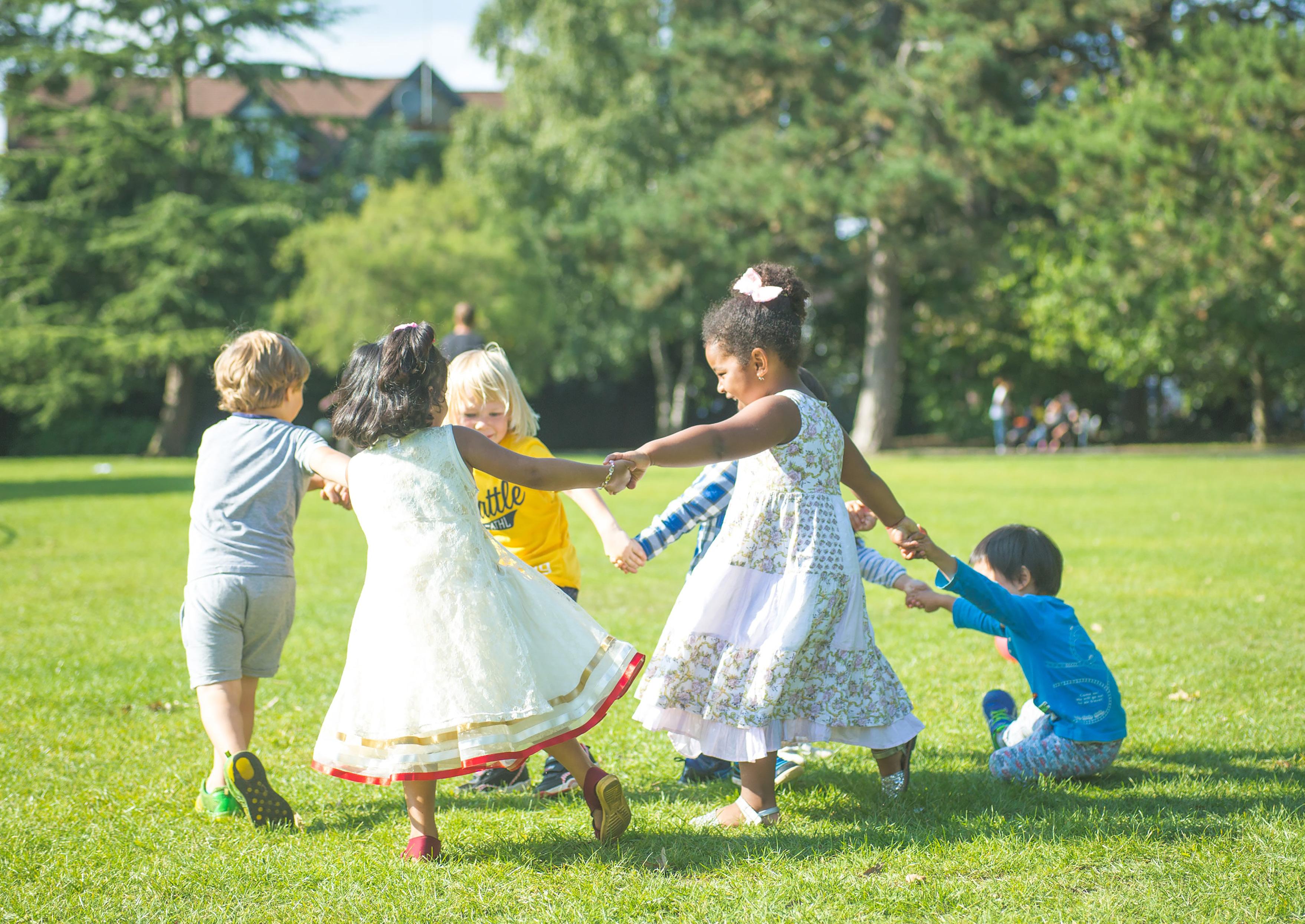
This strategy is rooted in one unifying objective:
To restore a playbased childhood for all children by 2035.
That is the benchmark by which we will measure our success — a bold, measurable goal, grounded in realworld access and societal change. But measuring success is not just about numbers. It’s about what changes for children — in policy, in public space, and in everyday life.
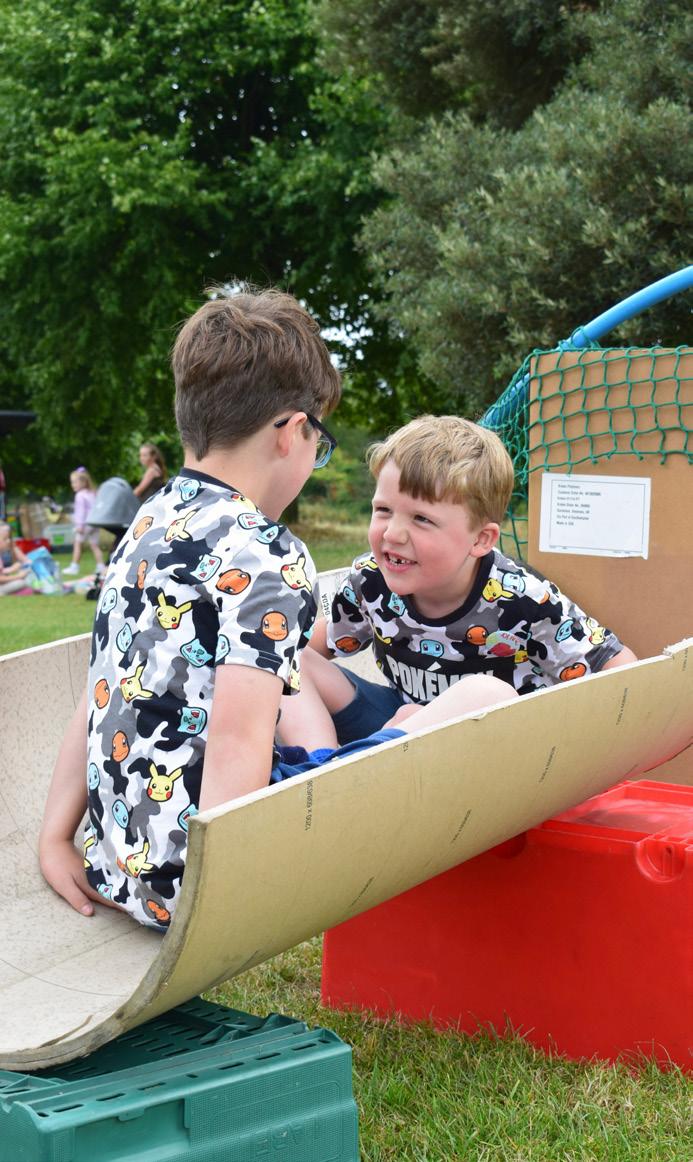
To know we are making a difference, we will ask three core questions:
• Is play accessible? Do children have time, space and opportunity to play — wherever they live, learn and grow?
• Is play accepted? Are societal attitudes shifting — toward freedom, trust and value for play?
• Is play protected? Are systems upholding play as a right — through investment, policy and legislation?
We will track progress through three key domains:
• Access to play — Including location, quality, inclusion and time.
• System change — Legislation, funding, planning and strategic leadership.
• Societal shift — Public attitudes, media narratives and local ‘norms’.
And we will centre the lived experience of children in how we define and understand success.
We will use our three-year cycle to assess progress every three years:
• Reflect —
With a nationwide State of Play review drawing on evidence, practitioner insight and children’s voices.
• Reinvigorate —
With a National Play Congress to gather, challenge and build new momentum.
• Renew —
With a public Strategy Update setting out what we’ve learned, what’s changed, and what comes next.
This cycle ensures the strategy remains dynamic, relevant and grounded — shaped by what’s working, what’s not, and what children need most.
Success is not defined by Play England. It is defined by children.
Only when children can freely, safely and joyfully play in their homes, streets, schools and communities will we know we are on track.
Success will mean:
• Protected, expanding play infrastructure — from playgrounds to digital spaces.
• A confident, skilled and diverse sector of play enablers.
• Systems that embed the right to play — in planning, funding and policy.
• A culture where play is visible, accepted and normal again.
This is not just a strategy. It’s a shared commitment — to choose play, protect play, and restore what childhood should be.
Because if we want happier children, stronger communities and a fairer society — it all starts with play!

Glossary
This glossary supports shared understanding of key terms used throughout the strategy.
Adventure
Playground
A staffed, open-access play setting offering space for creative, social and risk-rich play. Rooted in playwork principles, these spaces are designed with and for children to encourage exploration, independence and self-directed play.
Commons Shared public spaces — such as streets, parks and community areas — where play is a collective right, not a private privilege. Reclaiming the commons means making these places welcoming, accessible and safe for all children.
Imagineer
Phygital Play
A term that combines “imagine” and “engineer,” referring to someone who creatively designs or invents solutions that blend imagination with practical implementation — particularly in design, play, or storytelling.
A hybrid form of play that blends physical and digital environments. It uses technology to enhance real-world play (e.g. digital scavenger hunts or AR games) while supporting movement, exploration and connection.
Play Enablers Includes, but is not limited to: parents, grandparents, carers, childcare workers, teachers, early years practitioners, playworkers, volunteers, planners and others who create the conditions for children to play. They are equipped and supported to uphold children’s right to play — by protecting time and space, fostering acceptance, and valuing play as part of everyday life.
Play Opportunities Include formal and informal play spaces, streets, schools, parks, community centres, supervised settings, and digital spaces — wherever children have freedom to play.
Play Sufficiency
A principle rooted in Article 31 of the UNCRC and General Comment 17, requiring governments to ensure that children have enough time, space, opportunity and freedom to play in their daily lives — across policy, practice and place.
Playworker [Apart from being an absolute LEGEND!] A trained professional who supports self-directed play in children. Guided by the Playwork Principles, they create and protect the conditions for free play — especially in spaces like adventure playgrounds and out-of-school settings.
Throughout 2024, Play England undertook a strategic re-imagineering process to develop a new 10year strategy. This process was grounded in extensive engagement and consultation, ensuring that the strategy reflects the voices, needs and aspirations of children, families, practitioners, researchers and policymakers and communities across England.
• Co-design Approach —
Built through open strategic sessions, stakeholder engagement, and consultation.
• Children’s Voice — Informed by national engagement, lived experience and insights – including face-toface sessions with our Executive Director.
• Open Sessions —
Four national workshops between throughout 2024 explored values, challenges, systems change and shared commitments.
− Strategy Wireframing (26 April 2024): An initial session to outline the structure and objectives of the strategy.
Co-design and Collaboration (8 July 2024): A collaborative session to inform the development of the initial strategic forecast.
− Challenge and Curiosity (18 October 2024): An open session to review and refine the strategic forecast.
Strategy Commitment (5 December 2024): A session during the 2024 AGM to solidify commitments to the strategy’s implementation.
• Evidence and Practice —
Shaped by academic literature, practitioner research and sector insight across education, urban design, law and child psychology.
• Timeline — Strategy development began in Summer 2023, with formal adoption and publication in Spring 2025.
We extend our thanks and gratitude to the following individuals and institutions for their invaluable contributions.
Eugene Minogue
Executive Director
Play England
Prof. Helen Dodd
Professor of Child Psychology
University of Exeter
Dr. Naomi Lott
Lecturer in Law
University of Reading
Andy Robertson
Digital Play Expert and Author
Taming Gaming

Dr. Paul Brindley
Senior Lecturer
School of Architecture and Landscape
University of Sheffield
Dr. Michael Martin
Lecturer
School of Geography and Planning
University of Sheffield
Plus , input from children, families, playworkers, planners, youth workers, politicians, policymakers and more through the national open sessions.
This strategy draws on an extensive evidence base including:
1 Imagineer involves combining creative vision with practical implementation to design and build innovative solutions.
2 Playing and Being Well – Literature Review (2023) Dr. Wendy Russell, University of Gloucestershire and Mike Barclay and Ben Tawil, Ludicology.
3 United Nations Convention on the Rights of the Child (UNCRC), Article 31 and General Comment No17 (2013) excerpts.
4 A Summary of the UN Convention on the Rights of the Child (2019).
5 United Nations Convention on the Rights of the Child (UNCRC): How legislation underpins implementation in England , Department for Education (2010).
6 Rights of Children and Young Persons (Wales) Measure 2011.
7 United Nations Convention on the Rights of the Child (Incorporation) (Scotland) Act 2024.
8 A Child’s Day: Trends in Time Use in the UK from 1975 to 2015 , Killian Mullan (2018).
9 Phygital Play refers to a hybrid form of play that combines physical and digital elements, where the digital world enhances, interacts with, or enables physical play experiences.
10 Children’s Play and Independent Mobility in 2020: Results from the British Children’s Play Survey, University of Reading (2021).
11 The Big Ask - The Big Answer, The Children’s Commissioner (2022) .
12 Trends in Children’s Street Play - Report , Play England (2023).
13 To Play or Not to Play: Mapping Unequal Provision of Children’s Playgrounds in England , University of Sheffield (2024).
14 The Play Strategy, Department for Children, Schools and Families and Department for Culture, Media and Sport (2008).
15 The Play Sufficiency Assessment (Wales) Regulations 2012.
16 The Town and Country Planning (Play Sufficiency Assessment) (Scotland) Regulations 2023.
17 Children’s Mental Health and Play – Briefing , Play England (2023).
18 CAMHS: Child and Adolescent Mental Health Services.
19 A Framework for Implementing the Right of the Child to Play: Space, Time, Acceptance, Rights-informed , University of Reading (2025).
20 PE and School Sport - The Annual Report, Youth Sport Trust (2024).
21 Enabling the meaningful participation of children and young people globally: The Lundy Model , Queen’s University Belfast (2007).
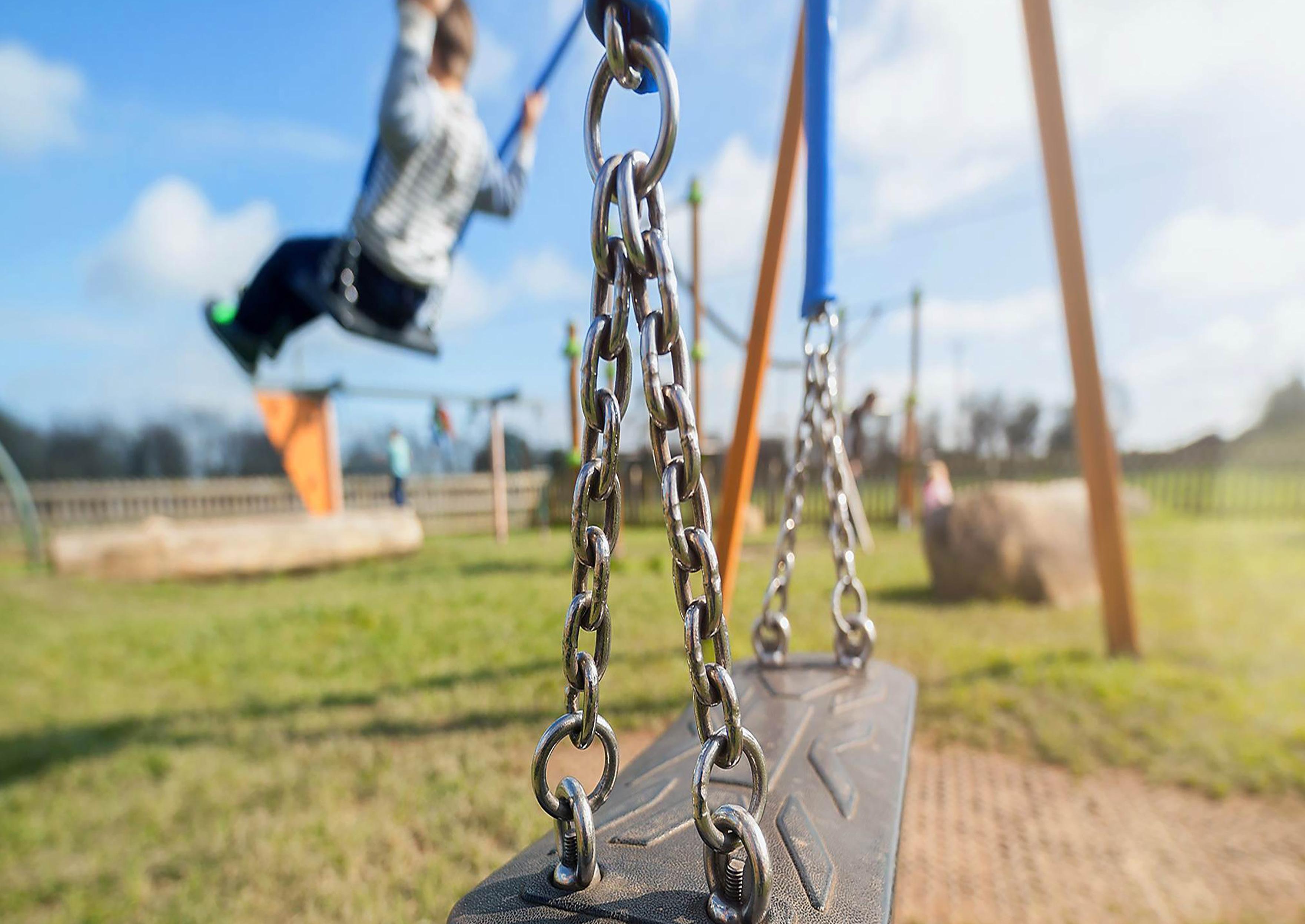
Designed by:


